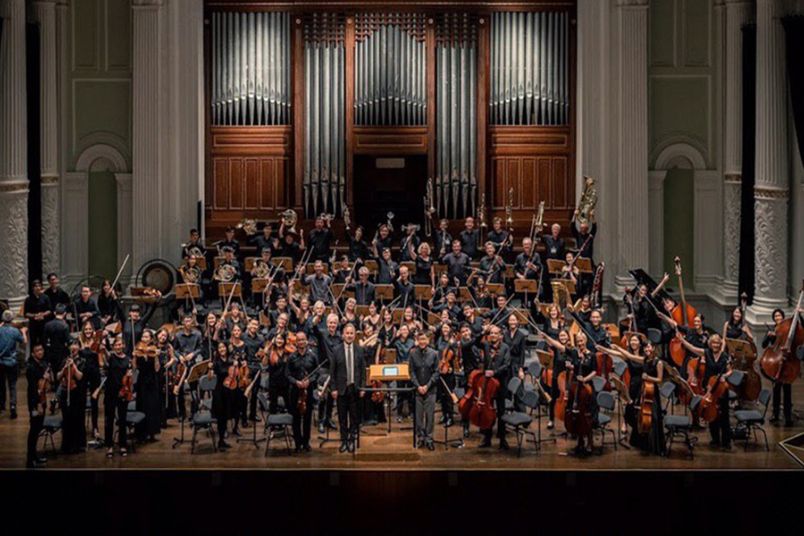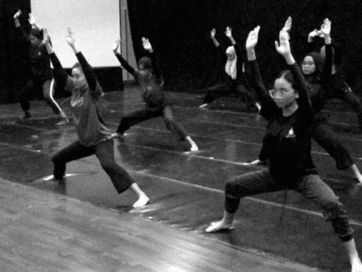The series of exchange concerts between NUS Symphony Orchestra (NUSSO) and Berlin Konzerthaus Audience Orchestra (KAO) was a special one to both orchestras. In addition to bringing two orchestras from two continents together, it was also one of the key events in NUSSO’s 40th Anniversary year.
The exchange involved a delegation of 10 NUSSO musicians, along with our Resident Conductor and Music Director Maestro Lim Soon Lee, travelling to Berlin from 11-17 June 2019 to perform with KAO during the Konzerthaus Open Day. The KAO then travelled to Singapore to perform with us again, together with the addition of the Singapore Wind Symphony Percussion Ensemble at Singapore Victoria Concert Hall.
This meaningful collaboration involved over 100 musicians, reaching out to more than 1500 people in both Berlin and Singapore.
Experiencing the music and culture of Germany
One place that all of us enjoyed was the Berlin Musical Instrument Museum, which houses a variety of rarely-seen instruments (such as Baroque wind instruments and the precursors to the string instruments we use today) and historically significant instruments (such as a Stradivarius violin).
Visiting the museum was really an eye-opening experience for us as it was the first time many of us even thought about the development of instruments over the years. One of the interesting exhibits consisted of a tuning fork mounted on a bendable piece of wood. By striking the tuning fork and gradually changing the shape of the wood, we got to witness how the shape of the wood affects the resonance, something that up till now, we have only been taught in theory by our music teachers.
Though we could not touch most of them, we were fortunate to hear the museum staff demonstrate a few of the instruments. In the center of the museum was also a gigantic organ, said to be one of the biggest of its kind, which produced a huge variety of sounds meant to serve as audio accompaniment to silent films.

No trip to a city is complete without learning about its history. To this end, we visited museums depicting history from three different eras – for preindustrial Berlin, we visited the Charlottenburg palace, a grand residence for the Prussian nobility with opulent furnishings. Here we learnt much about the life of Sophia Charlotte, who commissioned the palace, and who herself was an aficionado of music.
Berlin during the second world war was best represented by the Holocaust memorial, a large square with huge concrete blocks lined up much like in a cemetery. The unique dimensions of each concrete block is said to represent the eternal anonymity of the murdered Jews, each of whom were unique. The museum laid beneath the ground of this memorial and was a sombre place for us to reflect upon the past misdeeds of humanity. We also visited the Checkpoint Charlie Museum, which documented the dark times when Germany was divided.
Through the spectrum of the cultural and historical institutions we visited, we gained a better understanding of Berlin and its music scene. This brought greater meaning to the tour, as we then appreciated the significance of our performance venue, the Berlin Konzerthaus, and also how classical music evolved to have such world-wide importance that is still felt today. We also learnt that we cannot take these for granted.
Experiencing the music and culture of Germany
In preparation for the concert, the tight schedule meant we had just two rehearsals. The musicians of KAO were very disciplined and worked as a big team, caring for each other and not being afraid to speak up for one another. They are not professional musicians and yet were able to uphold such high standards and good attitudes, all fuelled by their connection and passion for playing classical music.

After the concert we joined the Germans on a cruise with food and refreshments. It was a thoroughly enjoyable experience where we got to know them on a more personal level. It should be kept in mind that Europeans are a lot more affectionate than Singaporeans when it comes to interactions between friends; for instance, we do not usually hug when greeting one another. The dedication and passion of the orchestra members in Berlin really shone through in our interactions with them over the time we spent together in Berlin and in Singapore. Even though many of them were busy with various commitments, they would not only put in the effort to familiarise themselves with their parts, they would also take the time to learn the other parts to get a better understanding of how their part fits in the music. We even saw the concertmaster practicing with a copy of the conductor’s score, something we felt was very inspiring.
Their efforts clearly paid off in rehearsals as well – they were able to quickly respond to the conductor’s directions and rehearsals were able to proceed in a very efficient manner, something that we hope to replicate!
Looking back, this trip gave us gave us a valuable opportunity to familiarise ourselves with the systems in place in Berlin, and what it was like planning an overseas trip. The learning experiences gained from this experience will help us greatly when planning next year’s orchestra tour, where NUSSO plans to travel around Europe and engage in more collaborations with orchestras, bringing NUS very own symphony orchestra to greater heights!
Share:
Contributor
Office of Student Affairs



